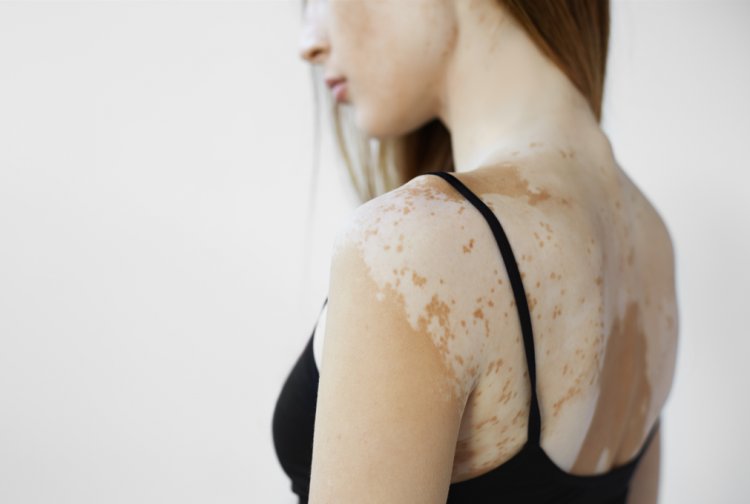Comprehensive Guide to Vitiligo: Causes, Symptoms, Diagnosis, and Treatment
Vitiligo is a chronic skin disorder characterized by the loss of melanocytes, the cells responsible for producing pigment, resulting in the formation of white patches on the skin. This condition affects approximately 0.5-2% of the world's population, regardless of age, gender, or ethnicity. While vitiligo is not life-threatening, it can significantly impact an individual's quality of life due to its cosmetic implications and psychological effects. In this comprehensive guide, we will explore the causes, symptoms, diagnosis, and treatment options available for vitiligo.

Causes
The precise cause of vitiligo remains unclear, but it is widely believed to be an autoimmune disorder in which the body's immune system mistakenly targets and destroys melanocytes. Genetic factors also play a role, as individuals with a family history of vitiligo are at a higher risk of developing the condition. Additionally, environmental factors such as stress, sunburn, exposure to certain chemicals, and traumatic skin injuries may trigger or exacerbate vitiligo in genetically susceptible individuals.
Symptoms
The hallmark symptom of vitiligo is the development of depigmented, or white, patches on the skin. These patches may initially appear small and localized but can gradually enlarge and spread over time. Vitiligo commonly affects sun-exposed areas of the body, including the face, hands, arms, feet, and lips, but it can also occur in other areas such as the armpits, groin, and around the eyes. In some cases, individuals may experience premature graying or whitening of the hair on the scalp, eyebrows, eyelashes, and beard.
Diagnosis
Diagnosing vitiligo typically involves a thorough physical examination by a dermatologist. The doctor will inspect the affected skin for characteristic depigmented patches and may use a Wood's lamp, which emits ultraviolet light, to aid in the visualization of depigmented areas. In some cases, a skin biopsy may be performed to confirm the diagnosis and rule out other skin conditions such as pityriasis alba or tinea versicolor.
Treatment Options
While there is no cure for vitiligo, several treatment options are available to manage the condition and improve the appearance of the affected skin. These may include:
-
Topical Corticosteroids: These medications are applied directly to the affected areas of the skin and work by reducing inflammation and suppressing the immune response, thereby promoting repigmentation.
-
Topical Calcineurin Inhibitors: Tacrolimus and pimecrolimus are topical immunomodulators that can be used to treat vitiligo by inhibiting the immune response and promoting melanocyte function.
-
Phototherapy: Phototherapy involves exposing the skin to ultraviolet A (UVA) or ultraviolet B (UVB) light either alone or in combination with psoralen, a photosensitizing agent. This treatment stimulates melanocyte activity and can help repigment the skin.
-
Depigmentation: In cases where vitiligo affects a large area of the body, depigmentation therapy may be an option. This involves using topical medications to lighten the unaffected skin so that it matches the depigmented areas.
-
Surgical Interventions: Surgical procedures such as autologous melanocyte transplantation, punch grafting, and suction blister grafting may be considered for individuals with stable vitiligo who have not responded to other treatments.
Living with Vitiligo
Living with vitiligo can present unique challenges, both physical and emotional. Individuals with vitiligo may experience feelings of self-consciousness, social stigma, and depression due to the visible nature of the condition. It is essential for those affected to seek support from friends, family, or support groups and to practice self-care and acceptance. Additionally, sun protection is crucial for individuals with vitiligo to prevent sunburn and further depigmentation of the skin.
In conclusion, Vitiligo is a complex skin disorder characterized by the loss of melanocytes and the development of depigmented patches on the skin. While the exact cause remains unknown, it is believed to involve a combination of genetic, autoimmune, and environmental factors. Although there is no cure for vitiligo, various treatment options are available to manage the condition and improve the appearance of the affected skin. With proper care, support, and treatment, individuals with vitiligo can lead fulfilling lives and embrace their unique beauty.
#Vitiligo #SkinDisorder #Autoimmune #Melanocytes #SkinHealth #Dermatology #SkinCare #SkinTreatment #VitiligoSupport #HealthAwareness #SkinConditions #Diversity #Inclusion #BodyPositivity #SelfCare #Acceptance #SkinPigmentation #MedicalGuide #HealthEducation #Healthcare #WellnessJourney
Disclaimer:
The information provided in this article is for educational purposes only and should not be considered medical advice. If you have any health concerns or are experiencing symptoms, it is important to consult with a healthcare professional, such as a doctor or clinic, for proper diagnosis and treatment. Always seek the advice of your doctor or other qualified health provider with any questions you may have regarding a medical condition. Do not disregard professional medical advice or delay in seeking it because of something you have read in this article.
What's Your Reaction?





















